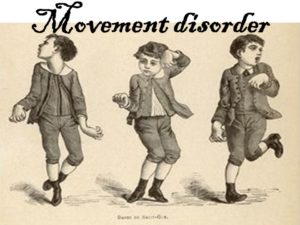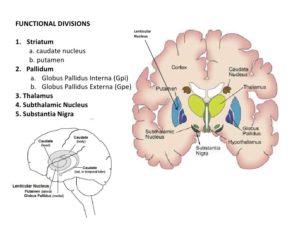
Overview
Movement disorders are neurological syndromes where they may be excess of or a paucity of movement. These diseases are associated with pathological changes in the brain which may be inherited or acquired. They are generally managed with medications and rarely require invasive procedures like deep brain stimulation.
Why do they occur?
Movement disorders can result from of brain injuries like trauma, infection, inflammation, metabolic disturbances, toxins or side effects of medications.
Sometimes, they can also be a symptom of other, underlying diseases or conditions, including genetic disorders.
Tremor
Tremor is a rhythmic shaking or trembling of a limb. Tremor can occur at rest or during movement, can occur alone or be accompanied by other neurological symptoms such as weakness or fine motor incoordination. Essential tremor is familial.
Myoclonus
Myoclonus is characterized by quick, sudden, involuntary muscle jerks that the child cannot suppress. The jerks may be random or in a semi-rhythmic.
It can also be part of a seizure disorder called myoclonic epilepsy, and for that reason, it’s often recommended that children with myoclonus be tested for epilepsy.
It may also be benign. Benign sleep myoclonus is seen in newborns during sleep and goes away by 6 months of age.

Chorea
Children with chorea have irregular, flowing movements that are sometimes described as “dance-like.” & they could be quasi purposive (incorporated into motions the child intends to make).Chorea is a symptom of a neurologic injury or genetic cause.
Ataxia
Ataxia is a failure of motor coordination caused cerebellar dysfunction. Its symptoms are clumsiness, poor balance, irregularity of movements and inability to perform fine-tuned or smooth movements. Some cases begin abruptly, & resolve as these causes are treated. Others may be episodic and are caused by epilepsy, genetic mutations, metabolic disorders or atypical types of migraine. Some are progressive forms of ataxia known as the spinocerebellar ataxias.
Tic disorders/Tourette syndrome
Tics are sudden, involuntary movements or sounds that come and go over time. They are common in children.
Children can suppress tics temporarily, but feel a building sense of push as they resist it.
If tics persist it is beneficial to see a specialist in movement disorders. The tics may progress and become potentially disabling, but most tic disorders resolve by the time a child reaches second decade.
If a child has both vocal and motor tics that last longer than a year, they are considered to have Tourette syndrome. Many children with Tourette syndrome also have attention deficit hyperactivity disorder (ADHD), obsessive-compulsive disorder (OCD) or learning disorders, which treated by a child neurologist or developmental pediatrician.
Dystonia
Dystonia is due to faulty brain signals which cause groups of muscles to contract abnormally or out of turn. Rather than contracting in a coordinated fashion, muscles contract in opposition causing painful twisting movements and contorting postures.
Dystonia is often triggered by specific actions, like writing or walking, but can also occur when the child is at rest.
Parkinsonism
A child is considered to have parkinsonism if she has at least two symptoms shared by adults with Parkinson disease: muscle rigidity, balance problems or frequent falls, slow movement (bradykinesia) or tremor while at rest. By itself, parkinsonism is the least common movement disorder in children.
Functional neurological disorders/conversion disorder
Sometimes it may be a functional neurological symptom disorder, sometimes called conversion disorder. Functional disorders also can occur in children with other neurological diagnoses and make an existing movement disorder worse. In some cases, children may benefit from joined care with a psychologist or psychiatrist.
Treatment
Dystonia must be treated with oral medications or Botox injections, because if it progresses it can damage joints and muscles.
Deep brain stimulation surgery before fixed deformities develop may be an important treatment to consider for certain children.
Is there any treatment for movement disorders?
Treatment depends on the underlying cause. There are interventions that can relieve children’s symptoms, in some cases dramatically.
Tic disorders, may eventually go away on their own.
Primary dystonia if treated early can be cured, whereas dystonia that goes undiagnosed and untreated for many years can become permanently disabling.
If the movement disorder is part of a serious genetic or degenerative disorder, there may be no curative treatment.
